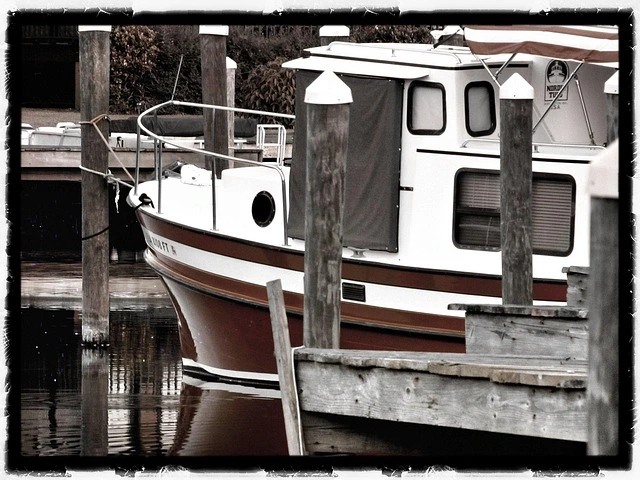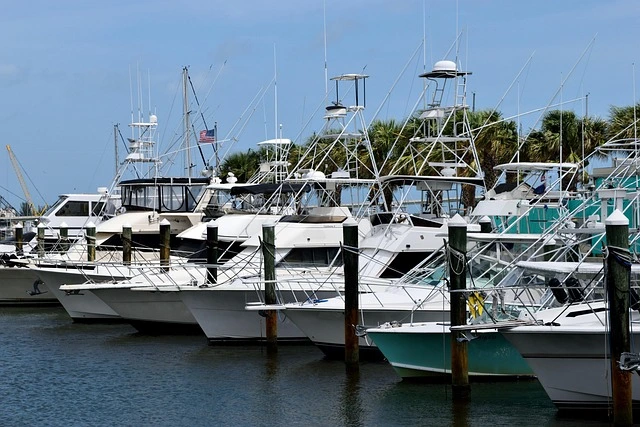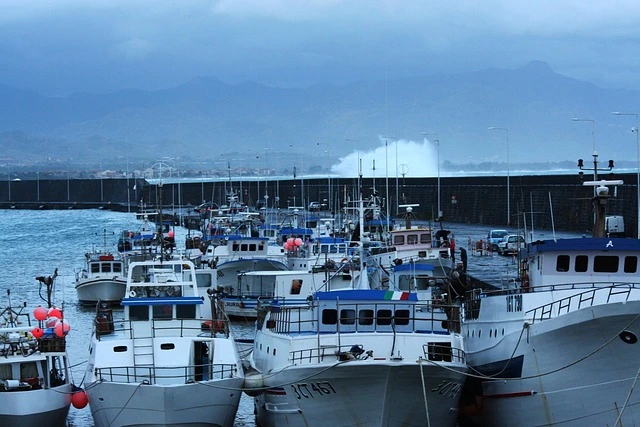Designing a Marina: Software Tools You Shouldn’t Ignore
Considering the software tools to help your day-to-day operations, as you map your marina’s design, is important. While architectural and engineering plans shape the physical layout, your operational systems will determine how well the marina runs once the docks are in place.
Marina management solutions, such as DockMaster, help you plan for efficient workflows, customer experiences, and business management processes, ensuring your marina can profit from the start.

In this blog, we’ll explore why you shouldn’t overlook software during the design and setup phases, and how integrating DockMaster in your implementation strategy can set the foundation for long-term operational success.
Key Phases in Marina Design
Designing a digital marin requires careful planning at every stage because each contributes to the sustainability of your facility. Here are four essential phases to focus on:
1. Layout planning and space optimization
A marina’s layout is critical for its efficiency and profitability. How you arrange berths, docks, and supporting facilities will determine the boat’s movement, fuel/services accessibility, and people’s interaction with your waterfront space.
For example, grouping fuel and transient slips too closely can create congestion, while placing long-term slips too far from amenities may inconvenience regular guests.
Early-stage layout planning should also include input from operations teams and software providers to create a functioning and convenient marina.
2. Budget forecasting and long-term ROI
Building a marina is a major investment, and relying on assumptions can lead to costly mistakes. Accurate financial forecasting is essential to understand potential revenue, operational costs, and long-term returns.
For instance, overestimating occupancy rates or underestimating seasonal staffing needs can impact your cash flow and delay profitability. Similarly, not accounting for maintenance or fuel management expenses may shrink margins.
Planning your operations with a financial system can help you better model income by dock type, forecast service revenue, and estimate costs more precisely across departments. Early consideration of financial reporting tools allows you to simulate different income scenarios, project break-even timelines and identify high-ROI services before launch.
3. Regulatory and safety planning
72% of GMDSS distress calls in 2023 were from the vessels operating in the Indian and Pacific Ocean regions. Areas prone to high maritime activity should consider designing marinas with concrete safety measures.
Other instances, like fuel leaks, faulty pedestals, and lapsed inspections, are more than operational risks; they are legal liabilities. A single overlooked safety protocol can result in fines, equipment damage, or harm to boaters. It becomes important to plan how your team will track inspections, fuel usage, and preventive maintenance from day one.

4. Early consideration of the tech stack for operations
You risk costly retrofits if you wait to choose your software until after the marina opens.
Do you have the right space for point-of-sale terminals? Are there enough mobile access points for service staff? Can guests reserve slips online from day one?
Planning your tech stack early allows you to design infrastructure that supports digital workflows and reduces costly changes later. This includes POS counters at the fuel dock, Wi-Fi coverage across docks, and designated spaces for mobile device charging or kiosk stations.
Must-Have Software Tools for Marina Setup
Once you are done designing a marina, you need the an operations software system running to keep everything in place. Below are five critical DockMaster marina planning tools for setup success. Each one supports a core function of the marina and helps turn a facility into a high-functioning business.

1. Visual Planning Software
Your marina can look hyper-organized from a distance, but it gets chaotic when boats arrive. And without a real-time view of who’s docked where, your team can only assume information. It leads to misplaced assignments, overbooked slips, or inefficient layout use becoming common.
In this case, the DockMaster Visual Marina Management system gives you a digital, drag-and-drop map of your marina. It integrates visual planning with real-time reservations, billing, and customer data, so every slip assignment links directly to a customer profile, payment status, and vessel history.
Your team can:
-
Locate boats on a visual map to prevent dockside confusion and traffic jams
-
Reassign slips using drag-and-drop tools to keep the marina organized
-
Track which vessels are using which section of a linear dock to maximize occupancy
-
Track vessel dimensions such as LOA (Length Overall) and LWL (Length Waterline)
The system also integrates with DockMaster’s Launch & Dry Stack Scheduler, helping you coordinate service requests, storage, and launch operations all from one interface.
2. Reservation and POS Integration
Disconnected systems are one of the biggest hidden leaks in marina operations. First impressions and cash flow suffer if customers can’t book a slip online or if their payment is delayed at the fuel dock.
DockMaster makes this easy from the start. Its reservation system supports transient and long-term slip rentals, with automated confirmations, reminders, and PDF storage proposals. Boaters can book online in advance through DockMaster’s integration with Swift Harbour, and staff can view or edit reservations with real-time availability.
Once guests arrive, DockMaster's Point of Sale (POS) system links directly to Inventory Management and Financial Reporting, so sales automatically update stock levels and flow into your accounting reports.
Your marina personnel can:
-
Handle all bookings and purchases from one platform with unified customer profiles
-
Process transactions quickly using a touch-enabled POS with barcode and receipt support
-
Accept secure payments via credit card, ACH, or mobile, including tip and deposit tracking
-
Use mobile POS through BoatCloud and SpeedyDock for dry stack and dockside service
3. Inventory & Parts Management
Marinas with retail stores, service yards, or maintenance shops rely heavily on inventory. Parts and supplies are constantly moving, and a missing item can delay jobs, interrupt service, or cause a lost sale.
The DockMaster Inventory Management system helps you avoid these issues by tracking parts and retail items in real time, updating stock levels when items are sold or used in service jobs, and flagging low inventory before it becomes a problem. You can manage multiple storage zones without getting confused between multiple tools.
With this DockMaster tool, you can:
-
Auto-generate and track purchase orders tied directly to accounts payable
-
Print barcodes and pricing labels for faster scanning and organized shelves
-
Use minimum/maximum thresholds to trigger reorders before items run out
-
Connect with PartSmart to look up parts quickly and build accurate pick lists
4. Customer CRM
Strong customer relationships drive repeat visits, long-term slip rentals, and reliable service revenue. But without visibility into a guest’s history or preferences, your team can’t deliver a personalized experience.
You can use the DockMaster Marina CRM to build loyalty from the very first customer interaction. From the first booking or inquiry, it creates a profile that tracks everything: boat specs, past services, slip assignments, POS purchases, and even insurance details.
Your team can use this marina-specific customer management system to:
-
Send reminders for scheduled work or slip renewals to keep service proactive and timely
-
Record preferences and communication notes to personalize future interactions
-
Offer 24/7 access via DockMaster’s customer portal so guests can pay bills or submit requests on their own
5. Mobile Technician App
When a boater reports an engine issue or dock light outage, your technicians must respond quickly and record their work. Delays in communication or documentation can slow service and lead to billing errors.
The DockMaster Mobile App gives technicians the tools to manage jobs from the field. The app syncs with your central DockMaster system so that work orders, time tracking, parts usage, and updates all stay connected.
Technicians can use this app to:
-
Clock in and out of tasks with mobile time tracking to improve labor accuracy and reduce end-of-day corrections
-
View, update, and complete work orders on-site with real-time job status updates and task lists
-
Attach photos, videos, and documents directly from the field—with files automatically synced to the work order
-
Use voice-to-text to add detailed job notes hands-free, speeding up reporting in busy environments
Why DockMaster Should Be Part of Your Operational Planning?
Operational planning turns your marina layout into a functioning business. DockMaster ensures your systems are ready to support everything that happens after the physical structure is ready.
Integrating it early in your planning stage allows you to map workflows into your physical space, like deciding where POS terminals go and setting up stations for mobile check-ins.
These details are much easier to address during pre-launch than retrofitting after guests arrive.
It also gives your team time to prepare. You can set up your customer database, train staff on service tracking, and run internal test scenarios before renting the first slip.
With DockMaster in place before opening, your team can:
-
Check in guests using mobile tablets linked to a live slip map
-
Sync fuel and retail purchases to a customer profile in real time
-
Schedule service work and assign tasks directly from the field
-
Send automated invoices, confirmations, and reminders
-
Track inventory movement across retail, yard, and service bays
-
Monitor revenue and service performance through built-in reports
This early setup helps establish a scalable foundation for growth. Its modular structure also allows you to add capabilities over time, such as boat sales CRM, advanced reporting, or integration with tools like FuelCloud or MarineSync, without disrupting your existing operations.
Real-World Use Case or Success Story
Atlantic Boats, founded in 1989 in Wareham, Massachusetts, is a full-service boating facility that includes a marina, boat sales and rentals, service, parts, and seasonal storage. A decade ago, they adopted DockMaster to run a multi-department operation without complexity.
Since then, the platform has become central to the business's operations, especially during peak seasons when activity spikes across all departments.
In 2020, when travel restrictions drove locals to nearby leisure, Atlantic Boats experienced one of its busiest years. DockMaster helped the team manage the surge while maintaining service quality.
Its inventory system tracked stock across retail, marina, and storage areas. Staff reconciled daily sales using location-based reports, automated purchase orders, and printed barcodes, keeping inventory accurate without manual checks. The customer management tools captured every detail, and the team used this information to deliver fast, personalized service.
Atlantic Boats’ service team used DockMaster to manage work orders, track technician hours, and monitor parts used. Managers gained visibility into labor costs and profit margins, while customers received faster updates and clearer communication. Custom orders also became easier. The integrated point-of-sale system handled special orders directly at checkout.
Reflecting on the impact DockMaster has had, Jason Lindstrom, Marine Store Manager at Atlantic Boats, puts it simply:
“For businesses still running on pen and paper, they don’t know what they’re missing. I still keep notes out of habit, but I don’t have to. 99% of our transactions and correspondence live in DockMaster.”
Design Smarter, Operate Better: Build with Software in Mind
Designing a marina goes beyond great views or top-tier amenities. Long-term success depends on how smoothly your operations run day in, day out. Software should be part of your planning process, not an afterthought.
Marina planning tools like DockMaster help you operate and scale confidently once your marina is ready-to-go. It equips you with the systems like layout stimulation, mobile service apps, and financial forecasting, needed to manage a modern marina.
If you're planning a marina or upgrading operations, now is the time to discuss the marina operations software to align your design with the expected workflow. Contact us today to learn how DockMaster can power your operations.
